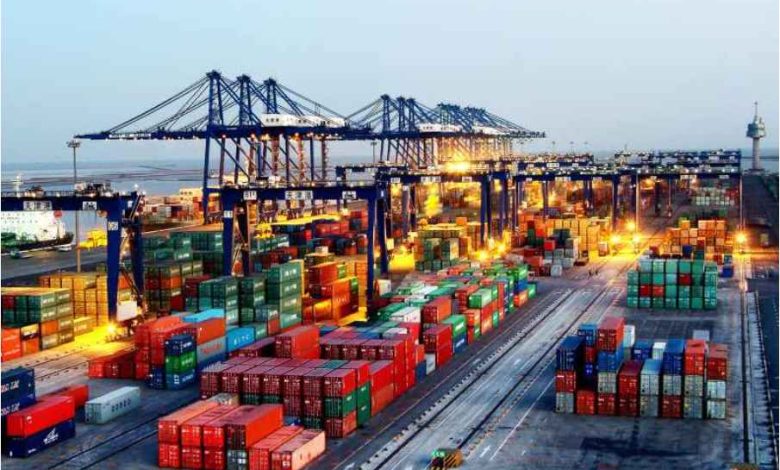

In the world of maritime trade and shipping, ports play a vital role as gateways for goods and commodities to move across continents. As we step into the year 2023, the global shipping industry continues to thrive, and certain ports have risen to prominence as key players in facilitating the movement of cargo. In this article, we’ll take a closer look at the ten most popular ship discharge ports in the world, discussing their significance, connectivity, and the reasons behind their prominence. Free Make Money Online
Introduction
10 most popular ship discharge ports in the world Shipping is the backbone of international trade, and the role of ship discharge ports is pivotal in ensuring the smooth flow of goods across the world. Ports serve as crucial nodes where vessels unload cargo, which is then transported via various modes to reach consumers and businesses. In 2023, certain ports have distinguished themselves for their efficiency, connectivity, and strategic location. Let’s delve into the ten most popular ship discharge ports that are shaping global trade this year…(Article Rewriter)(Plagiarism Checker)
Shanghai, China: A Maritime Megacity
Shanghai, often dubbed as the “Paris of the East,” stands as a maritime giant. The Port of Shanghai holds the title of the world’s busiest container port, a testament to China’s economic prowess and global trade dominance. With its strategic location, state-of-the-art infrastructure, and extensive network of shipping routes, Shanghai continues to be a magnet for international cargo.
Singapore: The Hub of Southeast Asia
In the heart of Southeast Asia lies the Port of Singapore, a bustling hub of maritime activity. Renowned for its efficiency and advanced logistics, Singapore serves as a vital link between the East and West. Its strategic location, world-class terminals, and commitment to innovation have solidified its position as a premier discharge port, facilitating trade across the region.
Rotterdam, Netherlands: Europe’s Gateway
Europe’s largest port, Rotterdam, holds a strategic position as a gateway to the continent. The Port of Rotterdam boasts unparalleled connectivity to European markets, making it a preferred choice for shipping lines. With its innovative approaches to sustainability and digitalization, Rotterdam remains a crucial player in the global maritime landscape.
Dubai, UAE: Bridging Continents
Nestled at the crossroads of Asia, Europe, and Africa, the Port of Dubai stands as a symbol of the UAE’s rapid growth and development. Recognized for its world-class facilities and cutting-edge infrastructure, Dubai plays a pivotal role in connecting trade routes and fostering economic diversification.
Los Angeles, USA: The Western Giant
The Port of Los Angeles, situated on the U.S. West Coast, is a powerhouse in trans-Pacific trade. As a major gateway for goods flowing between the United States and Asia, it handles an impressive volume of cargo each year. With its commitment to sustainability and innovation, Los Angeles continues to play a crucial role in shaping global maritime trends.
Busan, South Korea: Connecting Asia
South Korea’s Port of Busan has emerged as a vital link in Asia’s maritime network. Its strategic location, coupled with state-of-the-art infrastructure and efficient operations, positions Busan as a key player in transshipment and regional trade. The port’s continuous growth reflects its importance in global supply chain dynamics.
Hamburg, Germany: Trade and Technology
Hamburg, known as the “Gateway to the World,” maintains its status as a key player in European and global trade. The Port of Hamburg’s focus on technological advancements and sustainable practices has earned it a reputation for efficiency and innovation. It remains a vibrant hub for cargo movement, catering to diverse industries.
Antwerp, Belgium: A Historic Port
With a history spanning centuries, the Port of Antwerp has evolved into a modern-day maritime powerhouse. As Europe’s second-largest port, Antwerp offers extensive connectivity and a comprehensive range of logistics services. Its adaptability, combined with a commitment to environmental stewardship, contributes to its continued success.
Qingdao, China: Emerging Powerhouse
Another Chinese port making its mark is Qingdao. Situated along the Yellow Sea, the Port of Qingdao has rapidly grown into an international trade hub. Its strategic location, efficient operations, and modern facilities have fueled its ascent, attracting global shipping lines and boosting China’s maritime influence.
Conclusion
In the ever-evolving landscape of global trade, ship discharge ports serve as critical nodes that facilitate the movement of goods, connecting nations and driving economic growth. The ten ports highlighted in this article have demonstrated exceptional performance, innovation, and adaptability, solidifying their positions as key players in shaping the maritime industry in 2023 and beyond.
FAQs – 10 most popular ship discharge ports in the world
- Q: How were these ports selected as the most popular? A: The selection was based on factors such as container throughput, connectivity, infrastructure, and global trade significance.
- Q: What role does technology play in the success of these ports? A: Technology enhances efficiency, tracking, and communication, contributing to streamlined operations and improved customer experience.
- Q: Are these ports vulnerable to geopolitical tensions? A: Geopolitical factors can impact maritime trade, but these ports’ strategic locations often help mitigate risks.
- Q: How do these ports contribute to local economies? A: These ports create jobs, stimulate local businesses, and generate revenue through trade-related activities.
- Q: What trends can we expect to see in the future of global shipping? A: Future trends include increased automation, sustainability efforts, and the emergence of new trade routes.






